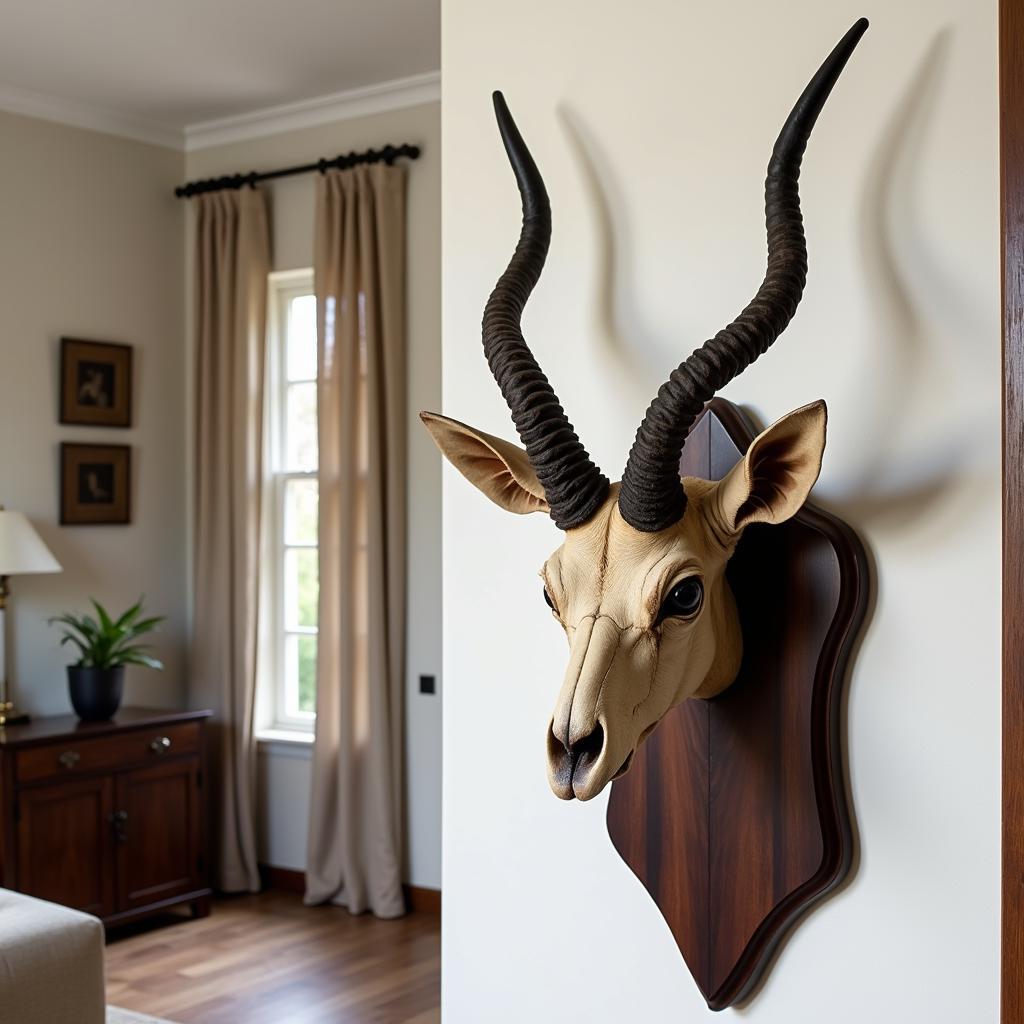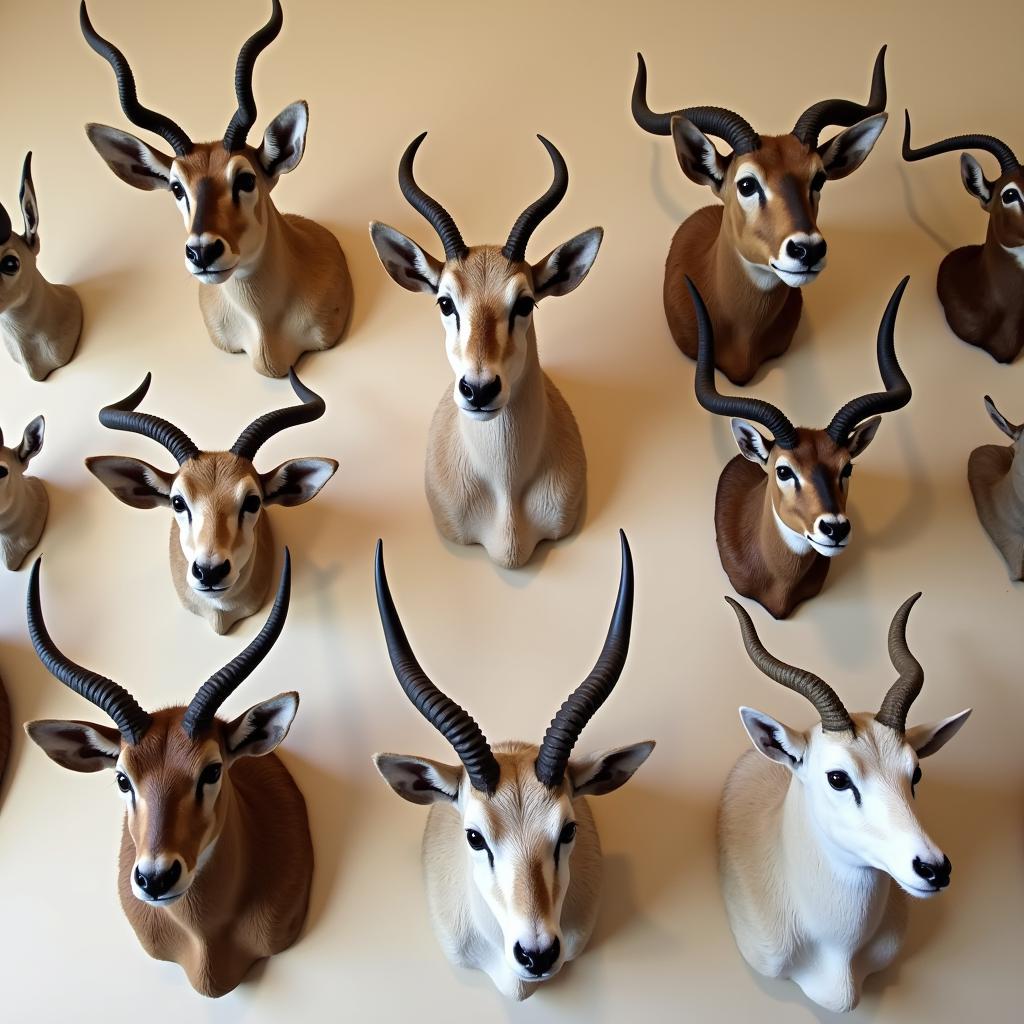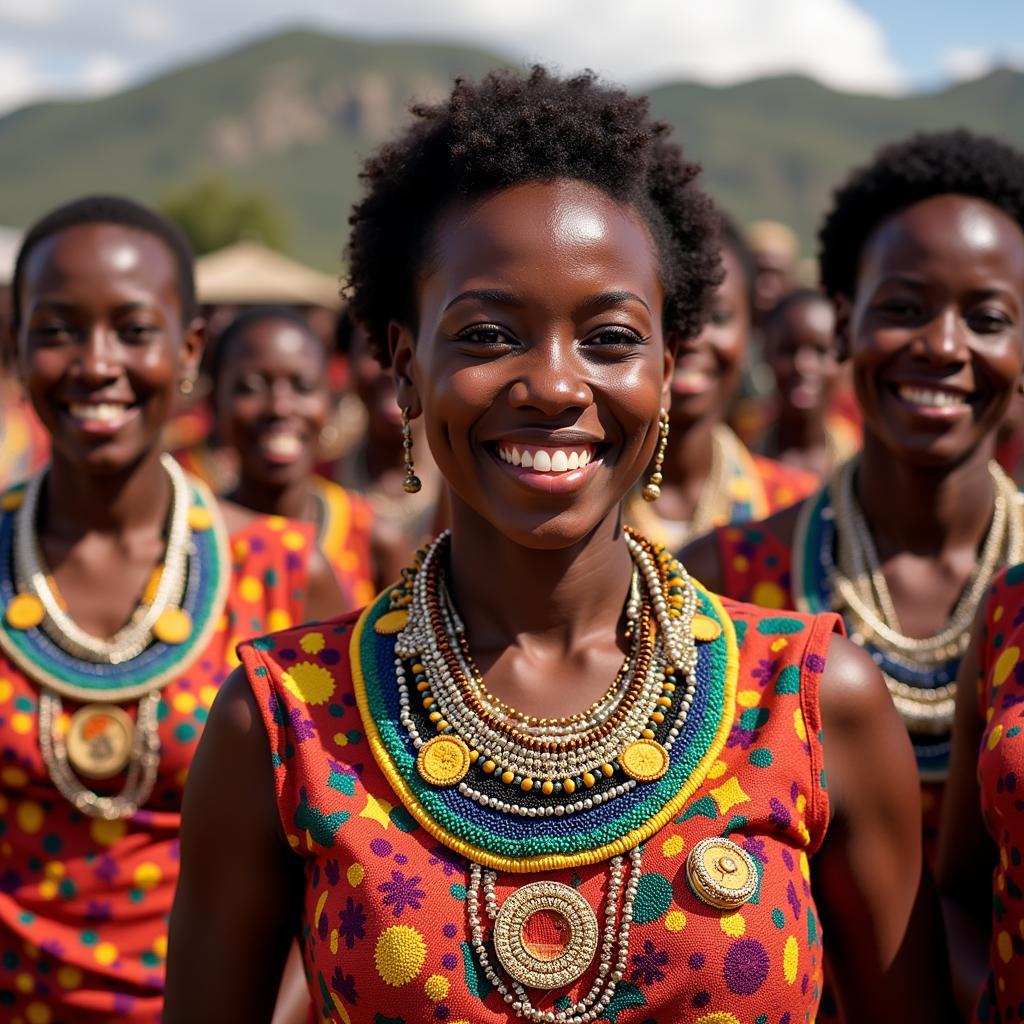Unveiling the Beauty of African European Mounts
African European Mounts have become increasingly popular for showcasing the beauty and majesty of African wildlife. This unique taxidermy method, distinct from traditional shoulder mounts, presents a captivating view of the animal’s skull and horns, preserving a piece of the wild in a sophisticated and elegant manner.
What are African European Mounts?
Unlike shoulder mounts that require the entire animal’s head and upper torso, African European mounts focus solely on the skull, horns, and a portion of the upper neck. This minimalist approach highlights the intricate details and natural beauty of the skull, creating a striking visual statement. The process involves meticulously cleaning, whitening, and mounting the skull on a wooden plaque or pedestal, often accompanied by the animal’s name and hunting date.
The Allure of African European Mounts
 Elegant African European Mount Displayed in a Living Room
Elegant African European Mount Displayed in a Living Room
The popularity of African European mounts can be attributed to their aesthetic appeal, ethical considerations, and space-saving nature. They offer a unique blend of artistry and natural history, appealing to hunters, art enthusiasts, and interior designers alike.
- Aesthetic Appeal: The stark contrast of the bleached white skull against the rich textures of the horns creates a visually arresting focal point. The minimalist presentation allows the natural beauty of the skull’s structure and the horns’ curves to shine through.
- Ethical Considerations: As European mounts only utilize the skull and horns, they offer a more sustainable and ethical alternative to traditional taxidermy. This method minimizes waste and promotes responsible hunting practices.
- Space-Saving Design: Their compact size makes them ideal for smaller spaces, allowing homeowners to incorporate these striking pieces into their decor without overwhelming the room.
Choosing the Right Mount for Your Space
 A Diverse Collection of African European Mounts
A Diverse Collection of African European Mounts
From the majestic kudu with its spiraled horns to the elegant impala with its lyre-shaped horns, the variety of African antelope species offers a diverse range of European mount options. Consider the size, shape, and overall aesthetic of the horns when choosing a mount that complements your existing decor and personal style.
Here are some popular choices:
- Kudu: Known for their large, spiraled horns, kudu European mounts exude grandeur and make a statement in any room.
- Nyala: With their distinctive, vertically twisted horns, nyala mounts offer a touch of elegance and sophistication.
- Bushbuck: Bushbuck horns, characterized by their short, spiraled shape, are ideal for smaller spaces and offer a subtle yet striking addition to any decor.
Caring for Your African European Mount
To preserve the beauty of your African European mount, proper care and maintenance are essential. Dust regularly with a soft cloth to prevent dirt buildup. Avoid exposing the mount to direct sunlight or excessive humidity, as these can cause discoloration or damage. With minimal upkeep, your African European mount will remain a treasured centerpiece for years to come.
Conclusion
African European mounts offer a captivating way to celebrate the beauty of African wildlife while adding a touch of the wild to your home decor. Whether you’re an avid hunter, an art enthusiast, or simply appreciate the elegance of natural forms, an African European mount is a unique and meaningful addition to any space. By understanding the process, allure, and care involved, you can confidently choose the perfect mount that reflects your personal style and appreciation for the wonders of the African wilderness.
Frequently Asked Questions
1. How long does it take to create an African European mount?
The process typically takes several weeks to a few months, depending on the drying time and the complexity of the mounting process.
2. Can I create an African European mount myself?
While it’s possible with the right tools and knowledge, it’s recommended to entrust the process to a professional taxidermist to ensure proper cleaning, whitening, and mounting techniques.
3. What is the average cost of an African European mount?
Prices vary depending on the species, size, and complexity of the mount, but they generally range from a few hundred to over a thousand dollars.
4. Can I display my African European mount outdoors?
It’s not recommended as prolonged exposure to the elements can damage the skull and horns.
5. Are African European mounts environmentally friendly?
Yes, they are considered more eco-friendly than traditional taxidermy methods as they utilize only a portion of the animal and minimize waste.
For further information on African culture and wildlife, explore our articles on the African country where gold is found and African bleaching products.
Need assistance with selecting the perfect African European mount for your space? Contact us at +255768904061, email kaka.mag@gmail.com, or visit us at Mbarali DC Mawindi, Kangaga, Tanzania. Our dedicated team is available 24/7 to answer your questions and guide you through our exquisite collection.

